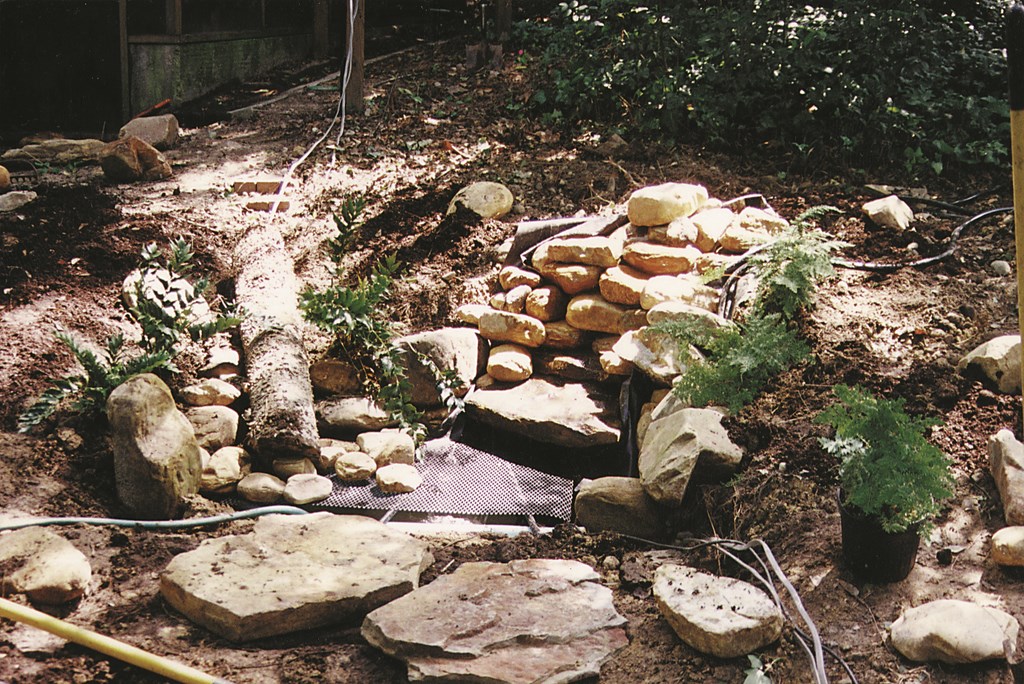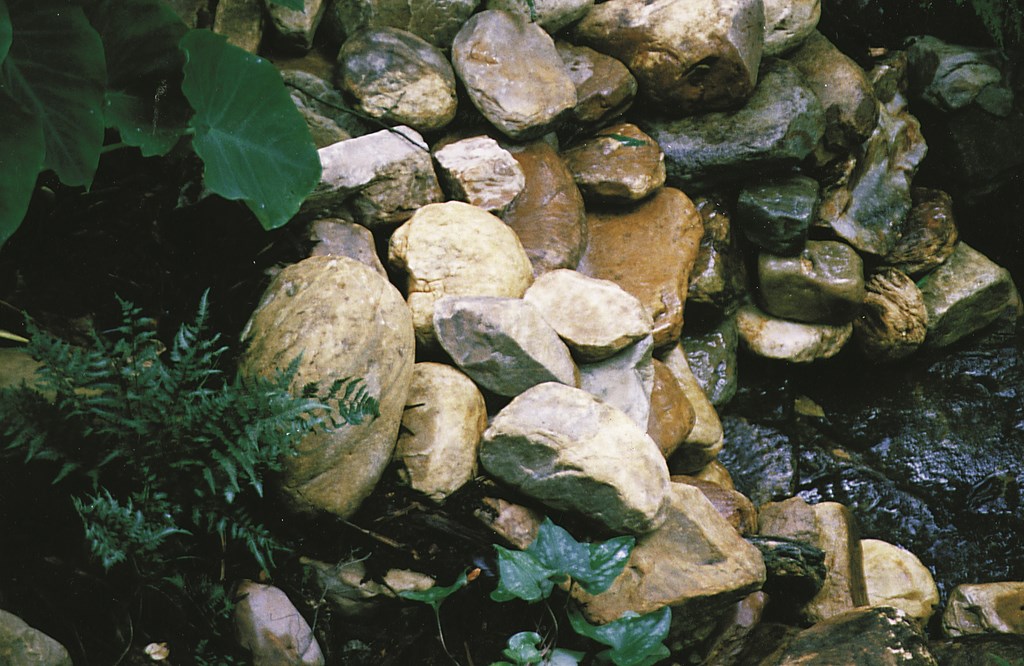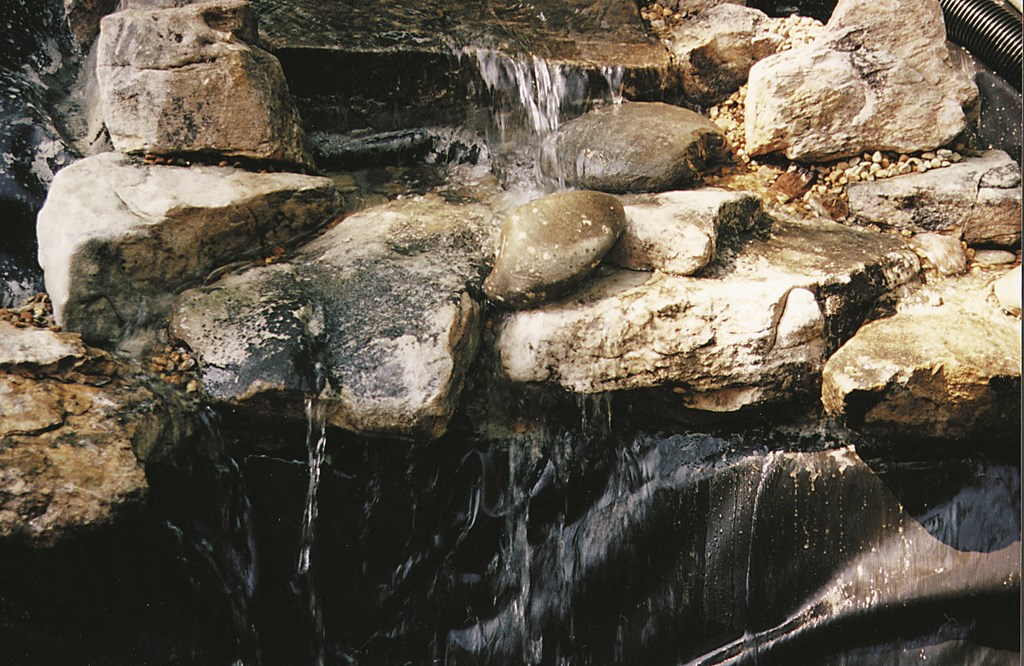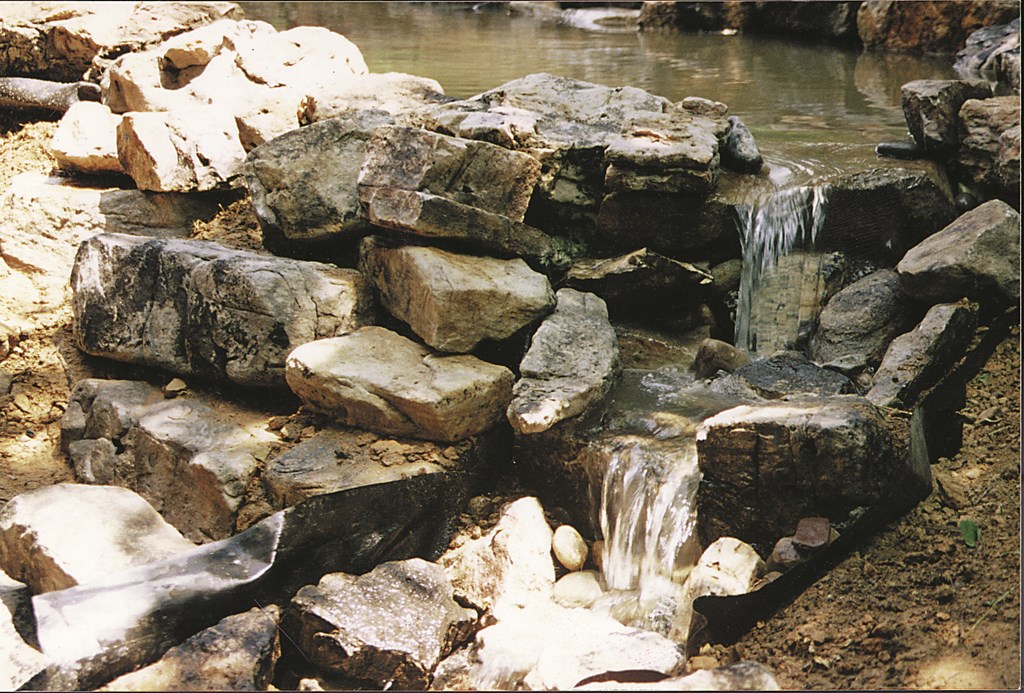Soothing Sounds
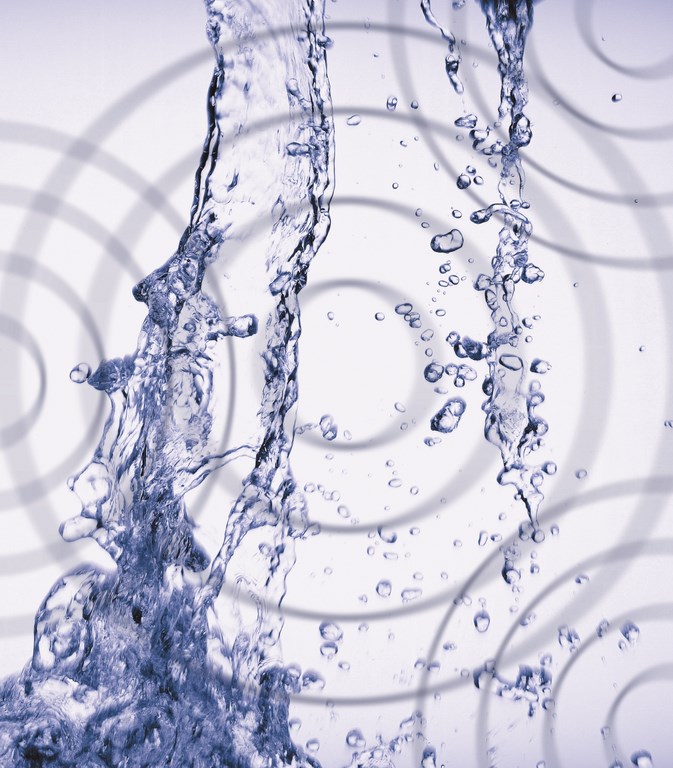
All too often, the purchasers of a home (new or old) find a garden space stripped of any natural feel. Large lot or small, they sense no “connection” to the land – only a bleak space devoid of vegetation or any sort of overhead canopy and lacking the finishing touches that draw them out of the confines of the home to enjoy what usually represents the majority of their real estate.
From my perspective, the best way to generate this connection to the land is through the creation of ponds, streams and waterfalls in these backyard settings. Such features bring a more natural look and feel to residential garden spaces and instill a sense of connectedness. And whether customers pick up this sense consciously or subconsciously does not matter: What matters is that they somehow know it, that they feel it.
Plantings are a big part of this picture, but I lean heavily on watershapes to create connections because of the sounds they make. In fact, I believe that sound has as much to do with making the connection as does sight and carries our work to a much higher level – a level that no other single element can.
Simply put, people respond to the sounds water makes – a fact that can help you transform a landscape to a garden and a garden to a sanctuary.
KEY QUESTIONS
Many factors contribute to the impressions made by a backyard, including the placement of its watershape, the materials used to build it, the associated landscaping, the lighting – the list goes on and on. All too often, however, designers and their clients focus on appearances and forget about sounds.
As I work on my designs, I always ask myself two questions: “What do my clients see?” and “What do my clients hear?” I can’t stress enough that these are two very different things and that each has a clear, dramatic effect. But for all the visual beauty embodied in many watershapes, I believe strongly that the effects of sound work almost magically in the way they influence the experience of the observer.
In other words, the combination of visual with aural effects transports us to a special place – a place of reflection, contemplation, meditation and connection – in ways no visual (but soundless) masterpiece can achieve on its own.
| In this project, I created a hidden grotto — and a hidden source of sound. As the water reaches the end of the stream, it flows into a deep tub that will be covered by stones. The large volume of hidden space (which had to be big enough to hold all of the water in the system), releases a deep, rich variety of sounds as the water trickles into it. To make the effect work, I covered the tub with a galvanized metal screen (shown) onto which I later piled stones. |
The collision of water and water or water and stone draws people to the source of the sound. It links spaces in and around the home (or office) to the water, even when the participant isn’t within eyeshot. Think about your own experiences of entering a home and hearing the sound of falling water through an open kitchen window: You are drawn to the source. Or think about the attractiveness of garden rooms in restaurants – and, on the flip side, about how frustrating it is to be trapped inside a sealed office tower with a view of a graceful fountain you can’t hear because the windows won’t open!
We’re talking about powerful, elemental forces here – things you should think about as you approach any design task.
As a watershaper, of course, you have a natural design edge here because you’re already bringing in the elements you need for effective work in the aural dimension. If it’s not something you do already, all it takes is giving a little thought to acoustics and considering ways you can bring a greater level of subtlety and creativity to the sound patterns with which you’re asking your clients to live.
Remember: Your clients will always hear their watershapes more than they will see them. Sometimes they’ll even sit or stand by a waterfeature, eyes closed – and minds open to the sounds and images that arise and carry them to other places.
STRATEGIC PLACEMENTS
So how can you achieve optimal aural effects? For me, the best way is to run through a list of water-specific sounds and the images they conjure – from babbling, splashing, meandering and trickling to dripping, splattering, plopping, plunging, gurgling, and gushing.
These words alone should evoke powerful images for you and your clients. More important for you as a professional, they should stir sensations of very specific sound effects and sensations for which you can strive as you compose your watershape, stone by stone, layer upon layer, from one descent to another. These words help you stay focused as you move from the headwaters and down through the cascades to the channels and eventually to the pool or pond.
| With the tub hidden, the flow keeps the stones wet, but almost all of the sound comes from the hidden source. |
As you work, consider the rhythm of falling water. By moving stones around to create shorter drops or by dropping water over rock by rock instead of as a straight fall, you change the pitch and sequencing of the sound. For starters, this variation in sequencing of drops creates great acoustic interest. And as it becomes more varied, it also becomes more complex in pitch as well as rhythm. With careful placement of just a few stones, you can create a rich tapestry of sounds even in a tiny watershape that takes up just a few square feet.
A caution: Work carefully with the scale of sound made by the “sheet falls” that fit so beautifully into a variety of designs. These curtains of water are patterned after the world’s great waterfalls (think Niagara); with their weirs or nozzles perfectly placed above a flat water surface, a sheet of water falls over and down into a lower basin. This makes for great visuals and a very distinct type of noise. As I see it, however, the sound here is not really a rhythm but, rather, a constant noise, especially in large applications.
| Setting up a number of small falls of different heights and volumes can create awesome aural effects — including a number of pitches that you can “tune” by working with placement of the stones at the bottom of cascades. As I set up these installations, I look for stones that already have “channels” in them — then use them to advantage. |
To my way of thinking about water and sound, these large sheet falls are well suited to the public arena, but less effective in backyards. In a public plaza, the observer pauses at the site for a limited time and the opportunity for intimate reaction is constrained by the open setting. These spaces work for a quick break, brief relaxation or a winding-down period, but exposure tends to be limited and the monotone of the falls works perfectly in creating drama, in drowning out traffic noise and in achieving other large-scale, blunt effects.
If the same type of fall is placed in a residential setting, however, the constant sheet of water and fixed sound may dull the senses rather than heighten them – and might even become annoying. The effect isn’t so much a sense of connection to the setting as it is a matter of creating “white noise.” It may dazzle the eye, but in the long run, it pales in comparison to a watershape designed to reflect nature in greater variety.
TUNING IN
That’s not to say that sheet falls never work. In fact, many brilliant backyard waterfeatures associated with pools in particular include falls of this type in their designs. My suggestion here is to take up the challenge of my second constant question – that is, “What do my clients hear?” – and think about ways of “fine-tuning” the sounds the sheet of water makes as it hits the pool or pond.
Often, for example, I will add splash stones at the bottom of the falls, extending them out from the edge of the receiving basin to break the falling sheet of water and alter its aural component. This very simple step lends a different rhythm to the falls and enhances the complexity of the sound without disrupting the visual drama of the sheet fall itself.
| I always keep an eye on aesthetics as I work, but I give as much or more consideration to creating multi-layered aural effects for my clients. In this case and many others, I’ve used double falls rather than single sheet falls to bring acoustical variety to the project. |
Another possibility here involves breaking up the sheet into falls of different volumes. Leave one large central flow, for example, and create two or three or four smaller falls on the sides. Let some of the water fall directly into the lower basin alongside water you’ve allowed to splash, tumble and jump from stone to stone before it reaches the lower basin.
This simple interplay creates different pitches of sound and generates great interest. (It can even attract wildlife, which, depending on the setting, may or may not be desirable!)
I’ve also experimented with the depth of the water in the receiving basin as a way to tune sounds and create specific effects. Deeper water offers a lower pitch, for instance, especially if there’s a large flow of falling water, while shallow water yields a higher pitch. So if the scope of the project permits, I urge you to try experimenting with stone or other hard materials just below the surface to find interesting sounds, pitches and rhythms.
As you work, remember that the key to effective aural design is to make the rhythm indiscernible to the human ear: If you prevent the listener from picking up a pattern or known rhythm that the conscious mind can decipher, the sound will always seem new and refreshing.
|
Natural Wonders As I work at tuning naturalistic watershapes, I like to experiment with elements that will move or change in time. For instance, I’ll place sticks, twigs and even logs into my natural streams and waterfalls, aware of the fact that water flowing over or onto a log creates a totally different sound than will that same descent in colliding with rock or more water. Of course, you’re introducing something that will decay into the setting, but I don’t see it as a source of concern. Rather, I see it as a welcome reflection of the randomness of real waterways. If you place a good-size log in a watershape, think about adding interest by planting moss or carving out a section of log to plant ferns – it really adds a special feel to the setting. And always remember that we are working with the ephemeral, even in installations that will last for generations! – R.A. |
Also be aware that there are many, many ways to achieve various pitches, sounds, gurgles and more. You can try placing loose stones in the falls area to send water off into different or variable directions or to collide with other stones or materials. And how about sending the water off in such a way that it collides with other falling water to create irregular rhythms? By dispersing the points where water falls into the basin or by spreading the falls and cascades over a broad area, you create different effects, filling the surrounding space with a warm, rich variety of sounds.
ECHOING NATURE
These sounds you create in your watershapes are nothing more than what you might find in the natural world as you walk through the woods and happen across a stream or a waterfall. Most times, you’ll hear this water before you see it – and what you hear will draw you toward the source every time.
I suggest strongly that you study what you find on these rustic pathways, look at the way the descents work and make note of details and ideas you can apply in your own designs. In this way, you’ll be better able to recreate these distinctive rhythms of nature and bring your clients’ backyards into closer touch with a very inviting natural world.
That’s what it’s all about: Our work with watershapes enables us to give clients access to special times, places and memories while creating fresh connections to the natural world. That may be an intangible, subconscious benefit of owning a watershape, but it is one that makes the work particularly rewarding as we capture magic in designing spaces with sight and sound in mind.
Rick Anderson is owner of Ston Wurks, a landscape-design firm in Columbia, S.C. A designer and artist with 21 years of professional experience, Anderson focuses on the use of natural materials, particularly stone, in naturalistic settings. He is the founder of The Whispering Crane Institute, a landscape design “think tank” dedicated to exploring our physical, emotional and spiritual relationships with the land. Anderson is a past director of the Association of Professional Landscape Designers and has contributed numerous articles to a variety of trade and consumer magazines.











